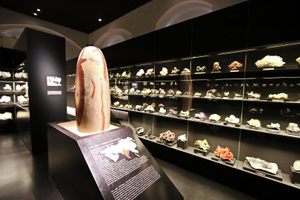About
This repository of mammalian brains, assembled over 35 years, reflects the rising interest in the evolution of the brain. If you’ve ever wondered what goes on inside the head of a Tasmanian devil, here is your chance.
Housed at the National Museum of Health and Medicine outside Washington, D.C., this collection contains over 275 mammalian brains, sectioned and stained to emphasize different regions. The familiar and the exotic mingle in a parade of pink brain matter. African bush elephants, dolphins, flying lemurs, anteaters and humans are all represented in an equalizing exposed condition. The most striking impression of the gallery is the similarity between these brains.
For thousands of years, scientists and philosophers have put forward theories, attempting to define the “one” characteristic that separates man from animal. Communication? Tools? Reason? Religion?
Recent studies and observations have turned this enterprise on its head, alleging that humans and mammals may be more alike than we think. Researchers at the Blair Drummond Safari in Scotland watched closely as Pansy, one of the park’s chimpanzees, peacefully passed away. They saw Blossom, Pansy’s best friend, hold her hand and comfort her while other chimps groomed and cleaned her. These behaviors echo human mourning rituals so strongly that they demand the need to rethink our anthropocentrism.
The burgeoning field of neuroscience is discovering the interplay between form and function in the brain. Scientists compare the brains in this collection, attempting to trace adaptations that are the source of behavioral and ecological phenomena. Researchers have established clear connections between physiological features in brain anatomy and the ways that mammals relate to and influence their surroundings.
Related Tags
Community Contributors
Added By
Published
July 30, 2013





















